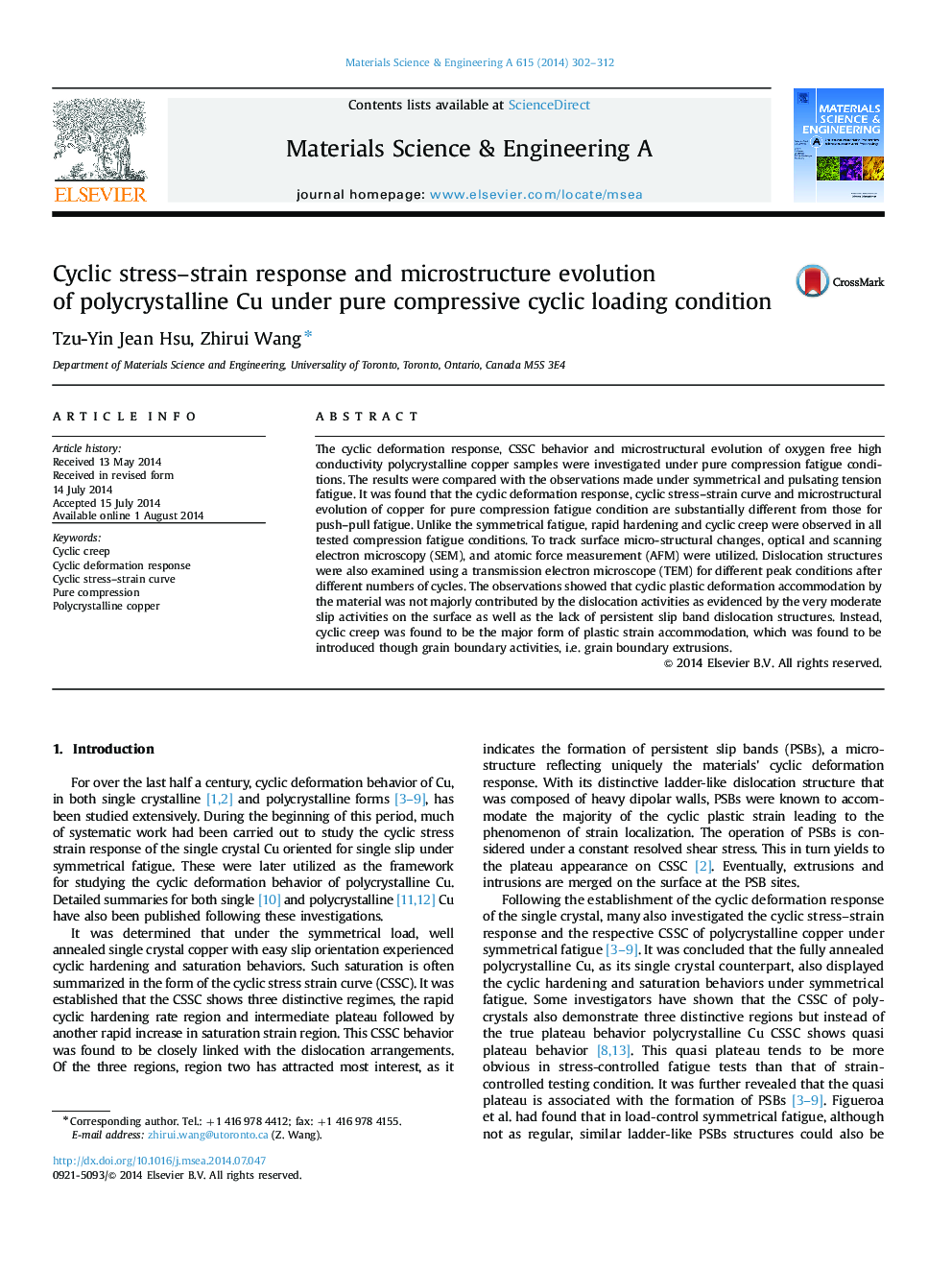| Article ID | Journal | Published Year | Pages | File Type |
|---|---|---|---|---|
| 7980112 | Materials Science and Engineering: A | 2014 | 11 Pages |
Abstract
The cyclic deformation response, CSSC behavior and microstructural evolution of oxygen free high conductivity polycrystalline copper samples were investigated under pure compression fatigue conditions. The results were compared with the observations made under symmetrical and pulsating tension fatigue. It was found that the cyclic deformation response, cyclic stress-strain curve and microstructural evolution of copper for pure compression fatigue condition are substantially different from those for push-pull fatigue. Unlike the symmetrical fatigue, rapid hardening and cyclic creep were observed in all tested compression fatigue conditions. To track surface micro-structural changes, optical and scanning electron microscopy (SEM), and atomic force measurement (AFM) were utilized. Dislocation structures were also examined using a transmission electron microscope (TEM) for different peak conditions after different numbers of cycles. The observations showed that cyclic plastic deformation accommodation by the material was not majorly contributed by the dislocation activities as evidenced by the very moderate slip activities on the surface as well as the lack of persistent slip band dislocation structures. Instead, cyclic creep was found to be the major form of plastic strain accommodation, which was found to be introduced though grain boundary activities, i.e. grain boundary extrusions.
Related Topics
Physical Sciences and Engineering
Materials Science
Materials Science (General)
Authors
Tzu-Yin Jean Hsu, Zhirui Wang,
